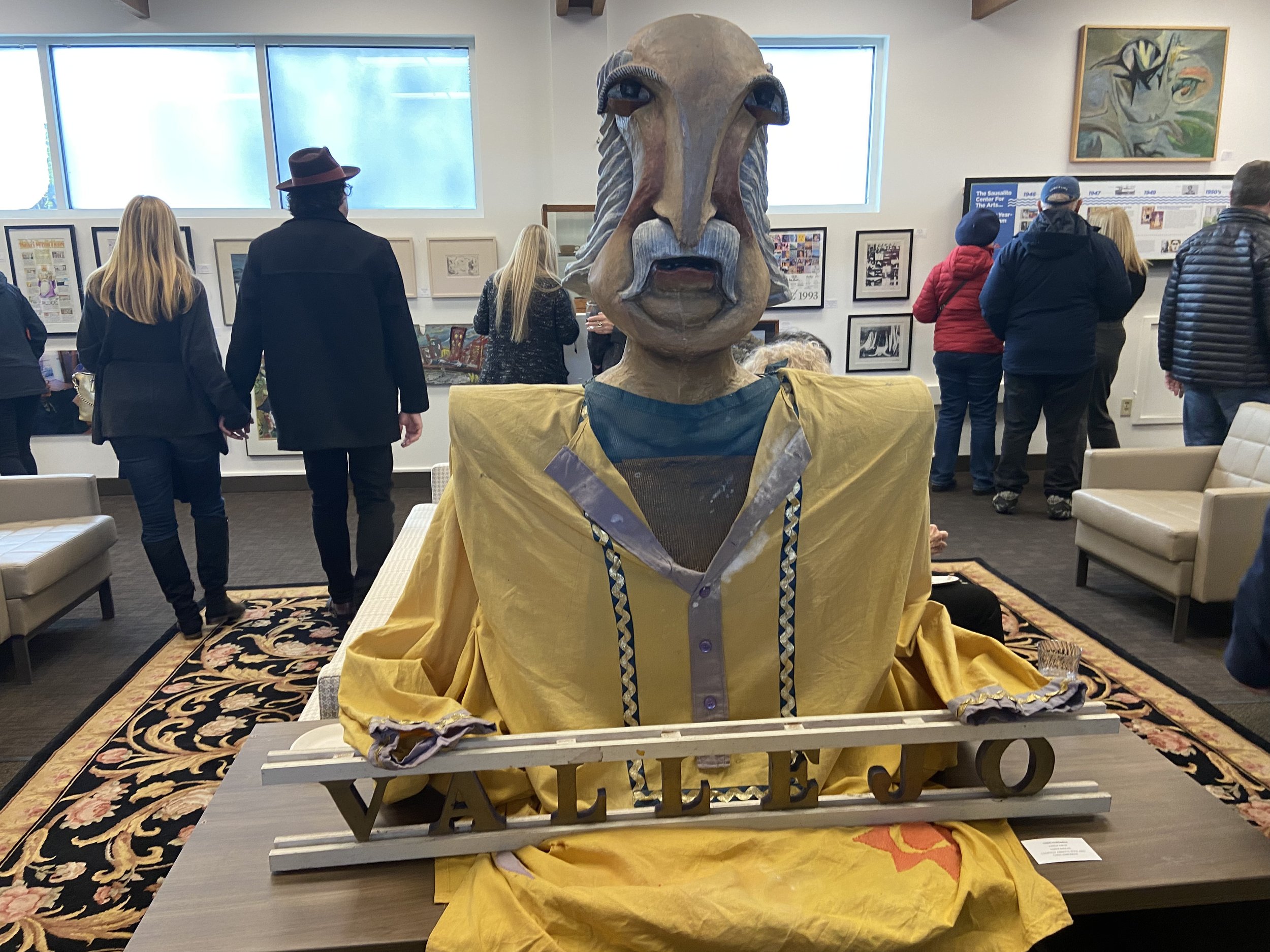Varda Mask
The Sausalito Center for the Arts at 750 Bridgeway is presenting a celebration of Sausalito’s artistic legacy, its present-day art scene and creative vision for the future. A graphical timeline traces artists and organizations that have contributed to the history of local art. Here are thumbnail sketches of some of the historic artists whose work is on display:
Enid Foster was a colorful personality from the 1950s, with a fringe of white hair peeping out from a head scarf and faded blue jeans. She became well known in Sausalito for her drawings and her anecdotes of the past. Her works include a self-portrait entitled “Tourists Go Home.”
After WWII Walter Kuhlman moved to Sausalito and began exploring Abstract Expressionism while also experimenting with printmaking. Kuhlman was one of six Bay Area artists, along with Richard Diebenkorn, who published a portfolio of lithographs that became a landmark in Abstract Expressionist printmaking. They became known as “The Sausalito Six” since most lived here.
In 1947, Greek émigré Jean Varda and artist Gordon Onslow Ford purchased the 1879 Ferryboat Vallejo, and salvaged materials from the abandoned WWII Sausalito shipyard to remodel it into two artist studios. Ever since, the ferry has served as a vibrant bohemian salon for a host of well-known artists and counterculture poets and writers.
From 1975-2007 Phil Frank was the pen behind the Farley cartoon strip in the San Francisco Chronicle and one of the Bay Area’s most beloved cartoonists. As a founder of the Sausalito Historical Society, he created the first history exhibit in the Ice House. His work as a writer/humorist inspired a renewed interest in Sausalito history.
There is also an exhibit of puppets from Antenna Theater, and memorabilia from the legendary Record Plant recording studio. Beyonce, Prince, Sly Stone, Rick James, Santana, Grateful Dead, the Tubes, Peter Frampton, Bob Marley and the Wailers and many others recorded in the redwood-sided building near the Bay Model. In 1978 Fleet Fleetwood Mac produced “Rumours,” the 26th-best selling album of all time there, even though the band’s two couples were breaking up as they created rock history. Attendees can hear some of the memorable music created at the Plant.
In addition, a Sausalito Showcase features a juried show of works by current Sausalito and Marin City artists leading today’s creative expression; these works are available for purchase.
An Art Tech Exhibit demonstrates what the future of art holds for Sausalito and beyond in multimedia and cutting-edge technology such as artificial intelligence.
Admission is free and reservations are not required. The Center will be open Wednesday – Sunday
11:00 a.m. - 5:00 p.m.
Volunteers are still needed for the exhibition, which will run until March 19. You can learn more and choose your time slots on the SCA website.
https://sausalitocenterforthearts.volunteerlocal.com/volunteer/?id=70740






